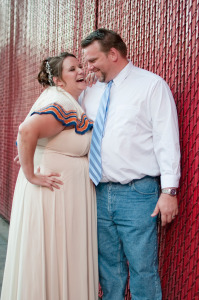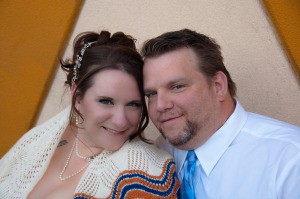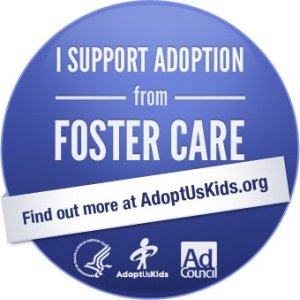 Image Source: Zazzle
Image Source: Zazzle
I’ve been doing a lot of contemplation in terms of expanding our family lately. This afternoon we met with an insurance agent at work in the hopes of getting health insurance. My request was that infertility testing was covered, but not IVF, surrogacy or IUI. I honestly just want to know what is wrong with me and see if it’s a “quick fix” that doesn’t require medication for the rest of my life.
But anyhow, adoption is still very much on the forefront of my brain. Last night I was digging around and looking for additional information to gobble up and bookmark. It came about after a conversation with my aunt and our family reaction to adoption. Sadly, I already know it will not be a positive reaction. It has already been shoved in my face that adoption is “wrong” and why don’t we “just have your own kids?” And that was simply the reaction from when I received some paperwork from an adoption agency in the mail.
During my digging, I pulled the following article from this page on The Adoption Guide. It doesn’t have links or anything concrete, but I found it interesting. The steps are pretty generic as there is much to do for each step. We are extremely fortunate to have friends and connections in the world of foster-care in Florida to help with the process.
I am just so ready to expand our family, but alas, we have quite a lot to get situated before even getting started down this road.
The fees are minimal to non-existent, wait times can be shorter than in private or international adoption, and there are many younger children, toddlers, and even infants available for adoption. In many cases, subsidies are available for the child’s living expenses and healthcare, even after the adoption is completed.
What is fost/adoption?
Children placed in fost/adopt homes are deemed likely to be available for adoption within a reasonable time frame. You foster the child until the birthparents’ rights are terminated, then adopt.
How do I get started?
1) Find an agency. To locate a public agency, find the Department of Public Welfare or Department of Social Services section on your state government’s website. Many private agencies handle fost/adoptions, as well; the adoption agency directory on this website allows you to find such agencies.
2) Complete an application and homestudy. The time-frame for processing depends on the agency you work with—anywhere from two months to a year.
3) Attend parenting classes. Most public agencies require adoption and parenting training, which typically takes four to twelve weeks.
4) Wait to be matched with a child. Wait times vary widely depending on the restrictions you specify as to race, gender, age, and health. For African-American and biracial children, particularly boys, the wait can be as short as a month or two.
5) Welcome him or her into your home. Once your child is home with you, the wait for him or her to become legally available for adoption will vary depending on the situation. There is an element of emotional risk involved; in some cases, the wait ends with the birthfamily deciding to parent the child. However, children in fost/adopt placements have been judged unlikely to be reunited with their birthfamilies.
6) Finalize the adoption. Once your child is legally free for adoption, it takes about six months on average to finalize the adoption.
For More Information
• Visit the North American Council on Adoptable Children’s Web site atwww.nacac.org.
© 2011 Adoptive Families. All rights reserved. Reproduction in whole or in part is prohibited.







 I just got my owl invite into the fab
I just got my owl invite into the fab 









